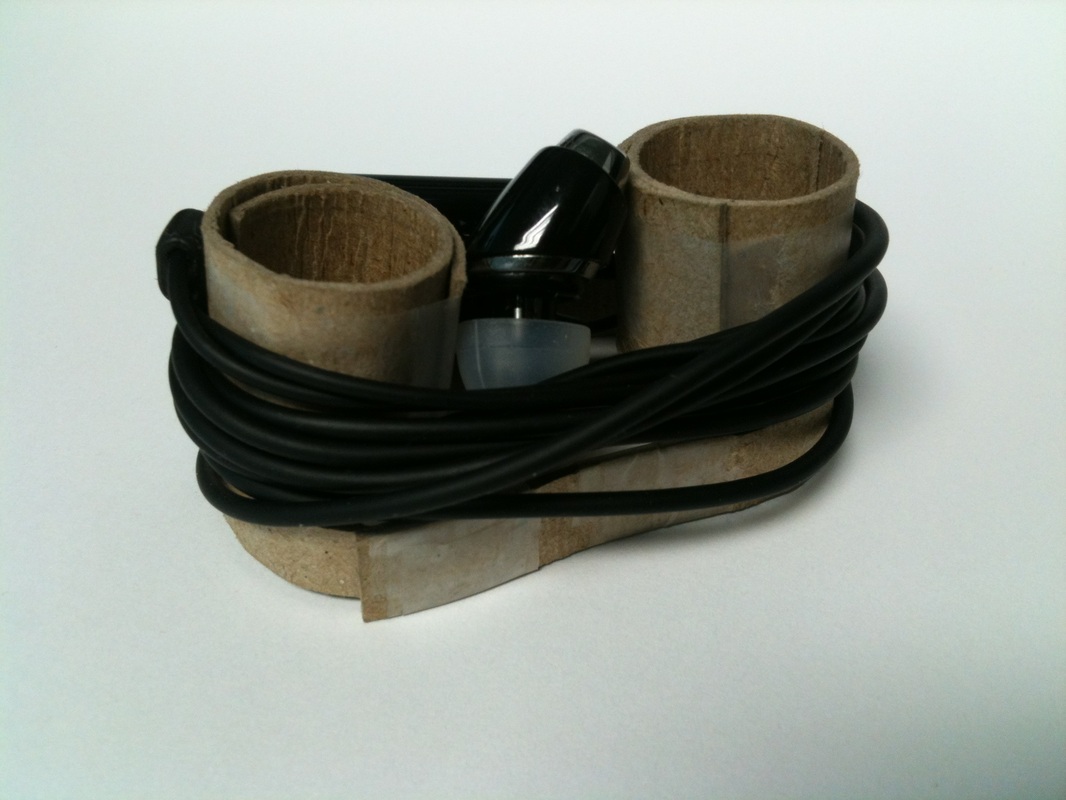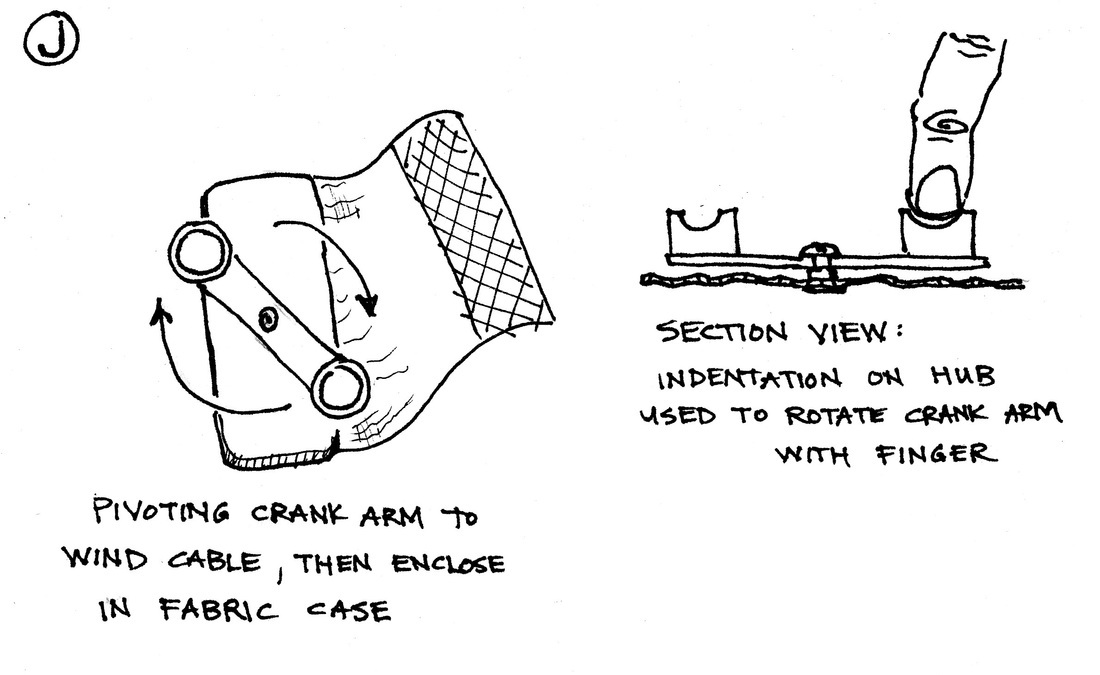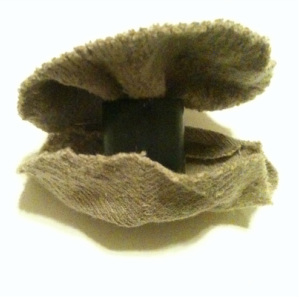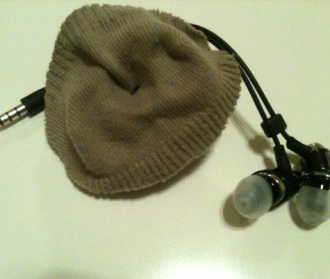My design gap: a system to provide quick and easy access to earbuds during everyday activities
Selection Matrix
Here is the Selection Matrix evaluation of the ten concepts according to the
primary user needs. I also used a Scoring Matrix, and found that the results were similar.
The highest ranking concepts are ReCoil, Peace Sign, Rubber Donut, Wraptor, and Finger Crank
After doing some research and parts sourcing for the ReCoil I discovered that there already exist a number of products along this design. I have decided to drop the ReCoil concept from my exploration for now and focus on more novel designs that I can most easily prototype.
The concepts I will prototype are Peace Sign, Rubber Donut, Wraptor, and Finger Crank.
My design gap: a system to provide quick and easy access to earbuds during everyday activities
Primary user needs:- Makes earbuds easier to deploy or store (fewer tangles)
- Makes the earbuds last longer
- Has a compact design
- Protects earbuds from harsh environments
- Makes it easier to locate earbuds
- Is well-made and durable
- Has attractive aesthetic characteristics
Wraptor
 Concept drawing | 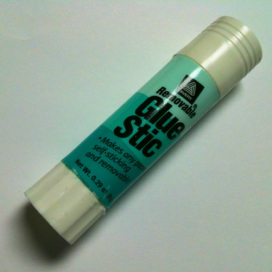 Donor tube |
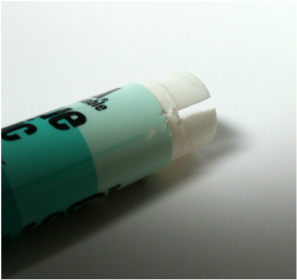 Notch to capture cable end |  Finished prototype |
This design was easy to wrap, but the cable wanted to slip off the end, so I added a notch. It proved difficult to insert the earspieces and plug without cramming them. It was also a little bulkier than I would like. A flattened tube may work better.
Peace Sign
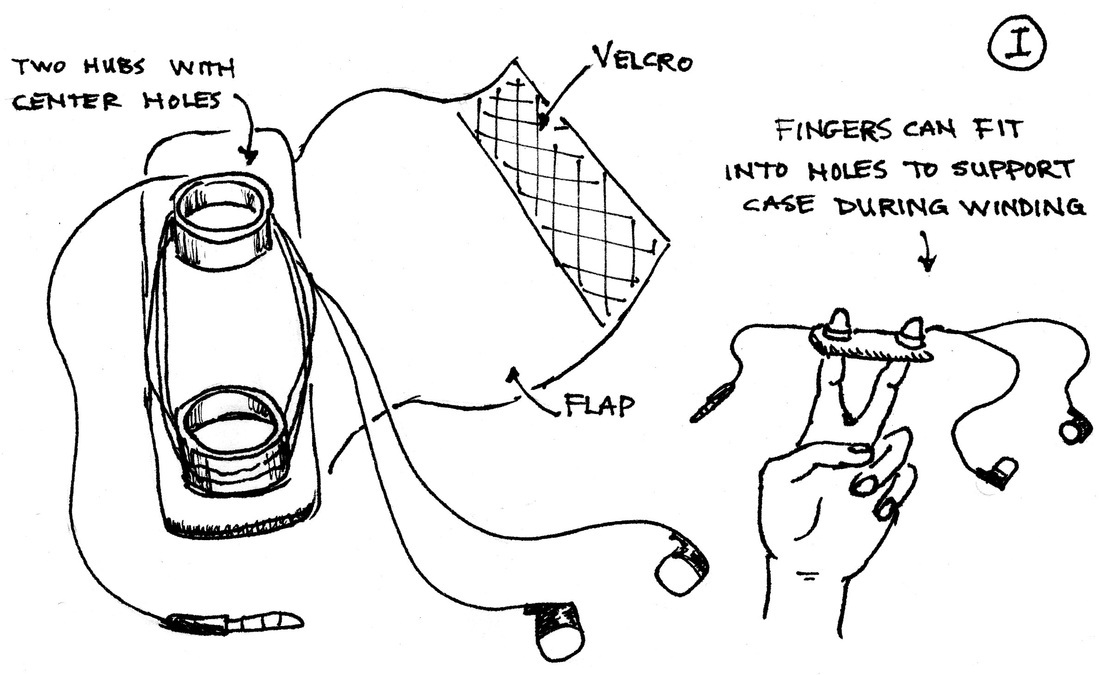 Concept drawing |  Bottom view |
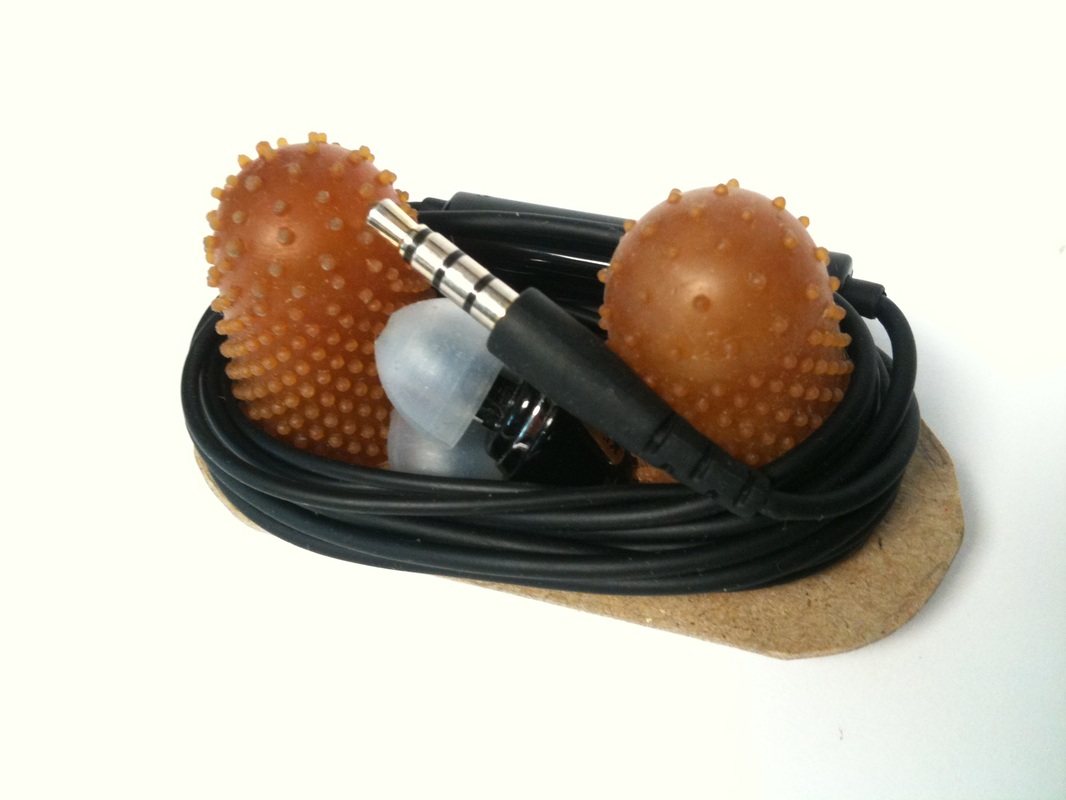 Top view | 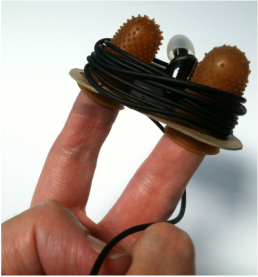 Peace |
The prototype was constructed from paperboard and rubber finger grips. I decided to leave off the flap and focus on the wrapping section. This design seemed easy to use in general. Winding was easy after a couple tries, and the double hub handled the inline microphone well once I figured out the proper spacing. The lack of rigidity of the rubber finger pieces caused them to collapse at times under pressure from the cable, although the rubber's stickiness helped keep the cable in place. The ability of the rubber to be compressed could also be a benefit when the flap is pulled around the wrapping section. Explore further with different configurations of soft and hard rubber.
Peace Sign version 2
Following up on the Peace Sign prototype, I made a second version from paperboard for increased rigidity of the hubs. The rigid hubs made winding easier and more consistent. The structure connecting the hubs was meant to be slightly springy to allow tension on the cable to be reduced. The space between the hubs proved to be a good spot to tuck the earpieces. The overall height needs to be reduced to make it small enough to keep in a pocket - worth exploring further.
Finger Crank
| |  Center axis |
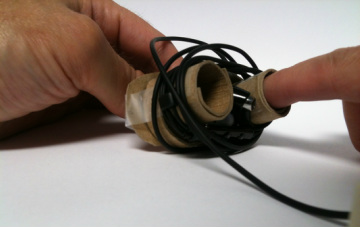 Finger winding in action
Finger winding in action
For this prototype, I attached the core from Peace Sign v2 to a base with a center axis made from a metal brad, again leaving off the flap.
The design was pretty difficult to use. Spinning the crank with my finger was OK, but I needed a third hand to guide the loose cable onto the hubs. It may be possible to add a guide element to the design, but it is simple enough to just wind the loose end with my free hand, as with the Peace Sign.
Rubber Donut
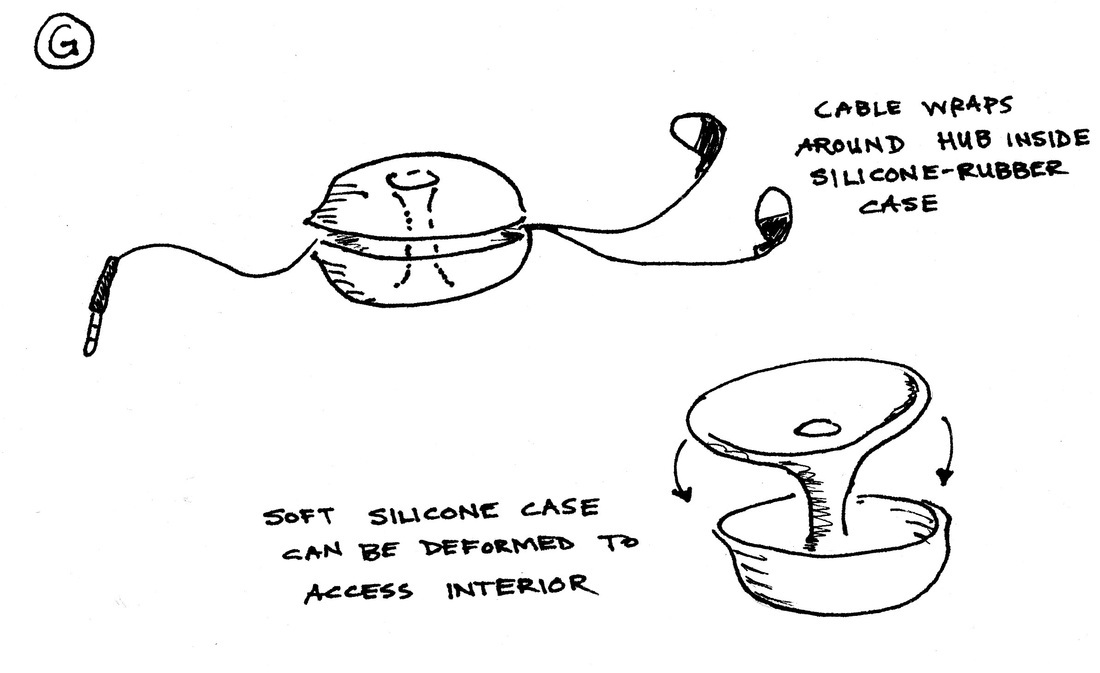 Concept drawing | 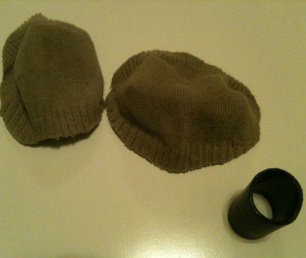 Component materials |
I did not have any suitable rubber material with the correct rounded shape for this prototype. Instead it was made from scraps of a sock stitched together through a short length of plastic tube. Rubber material would behave very differently, but I was able to test some aspects of the design. Winding the cable was easy, though the small single hub did not handle the inline microphone very well; the mic ended up jutting out of the enclosure most of the time. An elongated form (more like an eclair than a donut) may work better.










